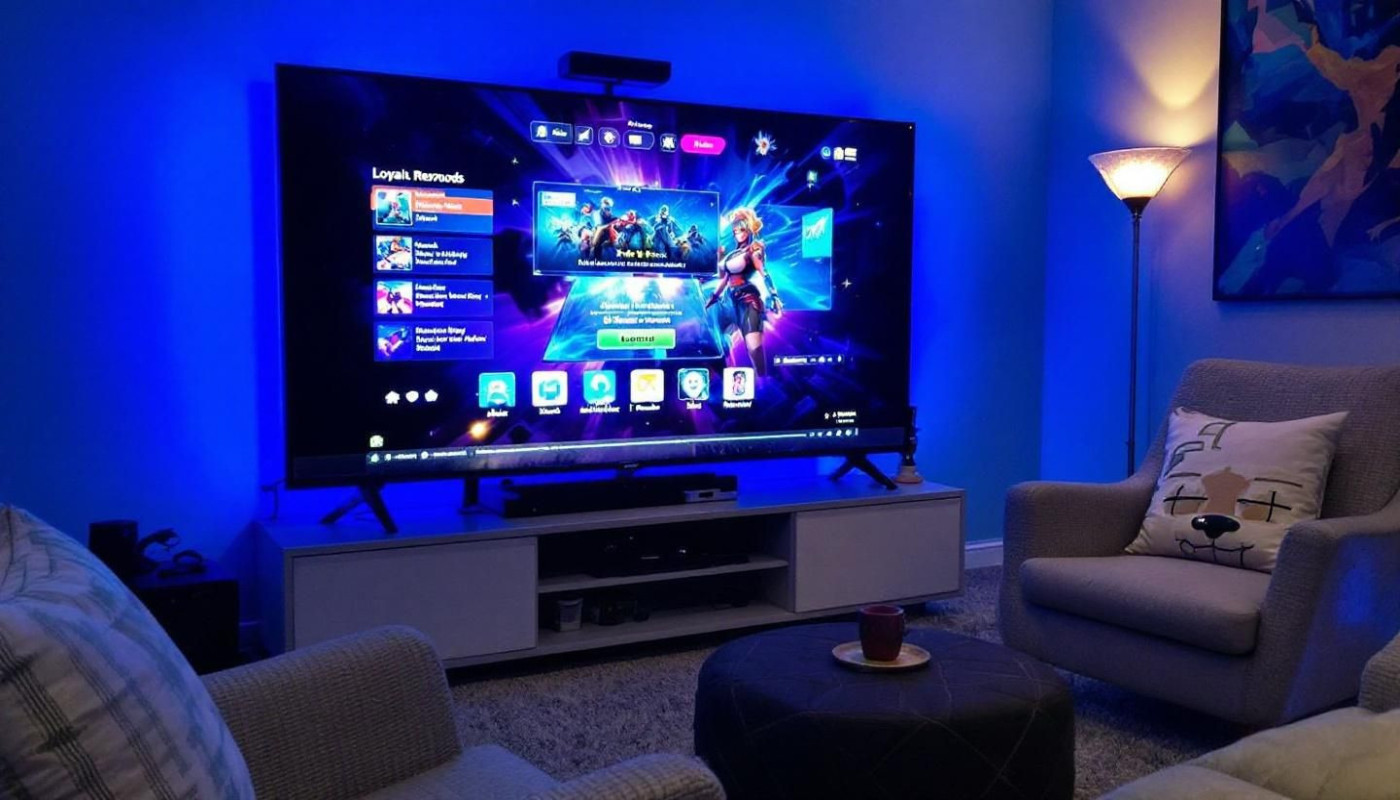Table of contents
Unlock the secrets behind successful player retention by delving into the fascinating world of loyalty programs. Discover how these strategic initiatives redefine engagement, boost satisfaction, and secure long-term allegiance in a highly competitive industry. Read on to uncover key insights that will help elevate any gaming platform’s player retention strategy to new heights.
The psychology of player loyalty
Player loyalty in digital gaming environments is rooted in a complex interplay of psychological mechanisms, among which positive reinforcement and operant conditioning stand out as central. Gaming psychology reveals that loyalty programs leverage structured reward systems, such as points, badges, or tiered benefits, to activate players’ intrinsic motivation. This approach utilizes operant conditioning by providing consistent, tangible incentives following specific actions, thus reinforcing behaviors that platforms wish to encourage. As users engage more frequently to achieve rewards, their attachment and commitment to the platform increase, driving higher user engagement and fostering robust retention strategies.
Loyalty programs also tap into emotional triggers by creating a sense of progress, belonging, and accomplishment—core components that enhance motivation. When players receive immediate feedback after completing challenges or milestones, the brain releases dopamine, strengthening the habit of returning to the game. In sum, these psychological techniques make retention strategies not only effective but deeply embedded in the user experience, ensuring that player loyalty is nurtured through both behavioral conditioning and emotional satisfaction.
Types of loyalty program structures
Within the gaming industry, loyalty program types are carefully engineered to maximize player engagement and satisfaction through a variety of reward systems. Tiered loyalty programs, a foundational element of many retention mechanisms, segment players into progressive levels based on activity or spend. This method taps into the drive for status and recognition, offering escalating benefits and exclusive perks as players climb the ranks. While tiered loyalty can foster long-term commitment and aspirational play, it may unintentionally alienate newcomers or casual users due to perceived unattainability of higher tiers.
Point-based rewards represent another widely adopted structure within gamification frameworks. Players accumulate points through gameplay or transactions, which can be redeemed for digital goods, bonuses, or exclusive content. The transparency and immediacy of this reward system appeal to a broad audience, encouraging repeat participation and fostering a sense of accomplishment. Yet, without regular updates or valuable reward options, such systems risk becoming stagnant, causing interest to wane over time and diminishing their efficacy as retention mechanisms.
Achievement unlocks leverage the intrinsic motivation behind skill mastery and exploration. Through this gamification framework, players complete specific objectives or milestones, unlocking personalized badges, in-game titles, or rare items. This approach can drive deep engagement and satisfaction, particularly among competitive or completionist-minded users. Still, when not properly balanced with fresh content and attainable goals, achievement-based models may lead to fatigue or frustration. In sum, the most effective loyalty strategists often blend multiple program types, optimizing each element to create a dynamic, responsive environment that sustains player retention and enhances overall experience.
Personalization and player retention
Data-driven personalization has transformed the effectiveness of loyalty programs by leveraging player data to create adaptive experiences that maximize retention optimization. Using advanced data analytics and predictive modeling, platforms can analyze extensive behavioral patterns, transaction histories, and engagement metrics to deliver personalized rewards that align closely with individual player preferences. This strategic approach ensures that loyalty incentives remain relevant and compelling, as adaptive rewards are dynamically adjusted based on real-time insights from player data. Predictive modeling enables a nuanced understanding of player motivations, allowing for the development of tailored incentives that foster deeper engagement and long-term loyalty. Platforms that harness these sophisticated techniques not only enhance the perceived value of their loyalty programs but also set a benchmark for retention optimization in competitive markets.
Measuring loyalty program effectiveness
Loyalty program metrics are at the heart of understanding how player retention rates are impacted over time. Tracking user lifetime value and implementing detailed ROI analysis allow operators to determine whether a loyalty program drives genuine engagement or simply increases short-term activity. Performance measurement leverages key indicators such as frequency of return visits, churn reduction, and average spend per player, which together reveal the true effectiveness of retention strategies. Among the most robust analytical tools, cohort analysis stands out as a pivotal technique: by segmenting users based on their sign-up date or first interaction, it becomes possible to observe patterns in retention and loyalty development, spotting which player segments respond best to specific program incentives.
Best practices in the industry suggest regular calibration of these metrics, combined with A/B testing and predictive modeling, to constantly refine loyalty offerings. Data scientists often compare benchmarks by referencing leading platforms, such as spinmama, which exemplifies data-driven loyalty initiatives in the online gaming space. This allows decision-makers to not only optimize user experience but also maximize business outcomes through targeted, measurable improvements in player engagement and retention.
Future trends in loyalty programs
Loyalty program trends in the gaming sector are rapidly evolving, driven by technological innovation and the growing demand for seamless, engaging player experiences. The future of gaming loyalty will be marked by the integration of blockchain rewards, which enable transparent, secure, and transferable benefits for players. Tokenization is set to become a transformative force, allowing digital assets and in-game achievements to be converted into tradeable tokens, fostering increased real-time engagement and deeper player investment. As blockchain technology matures, expect loyalty programs to leverage these systems, ensuring that every interaction, purchase, or achievement can be instantly recognized and rewarded across platforms.
Real-time feedback mechanisms are another significant trend, empowering developers to personalize rewards based on live player behavior and preferences. This instant recognition not only fuels ongoing engagement but also strengthens the emotional connection between the player and the gaming ecosystem. Cross-platform retention strategies are gaining momentum, as players increasingly expect their progress and rewards to follow them across devices and game titles. By integrating loyalty systems seamlessly across mobile, console, and PC platforms, companies can provide a unified experience that encourages long-term loyalty and reduces churn.
For industry futurists, the impact of tokenization stands out as a game changer in loyalty program trends. It lays the groundwork for decentralized, interoperable reward systems that transcend individual games and publishers. This shift promises to reshape retention strategies, offering players unprecedented control over their in-game assets and loyalty benefits. As the future of gaming unfolds, the embrace of blockchain rewards and real-time engagement tactics will likely define which companies lead in retaining player loyalty in an increasingly competitive landscape.
Similar articles

How To Master Obstacle Courses In Avian-inspired Games?

How Game History Can Improve Your Betting Strategy

How Modern Websites Ensure User Authenticity?

How Modern Security Measures Enhance User Safety On Online Gaming Platforms?

Exploring The Evolution Of Pirate-themed Slots In Online Gaming

Exploring The Impact Of Game Themes On Player Engagement And Retention

How To Start Playing The New Social Media Hit Casino Game

How To Safely Play Casino Games Online Without Downloading Apps

Exploring The Features And Credibility Of Top Betting Platforms

How To Set Up Your Online Game For Maximum Enjoyment

Exploring The Consequences Of Engaging In Sports Activities Without Official Authorization

Exploring The Legality Of Binary Options Across Different Regions

The Importance Of Responsible Gambling Practices

Guide To Effective Communication With Customer Support In Online Gaming

Exploring The Impact Of Bonuses On Online Casino Success

Exploring The Benefits Of Advanced Music Search Tools For DJs

Exploring The Impact Of Traditional Japanese Art On Modern Design

Navigating The Unique Features Of Australian Online Casinos

Understanding The Security Features Of Online Betting Mirror Sites

Exploring The Legality And Safety Of Using Offshore Betting Sites

Exploring Mythological Themes In Online Slot Games

Exploring The Link Between Game Design And User Engagement

Strategies To Navigate Through Difficult Levels In Casino Games

Exploring The Latest Trends In Digital Media And Entertainment

